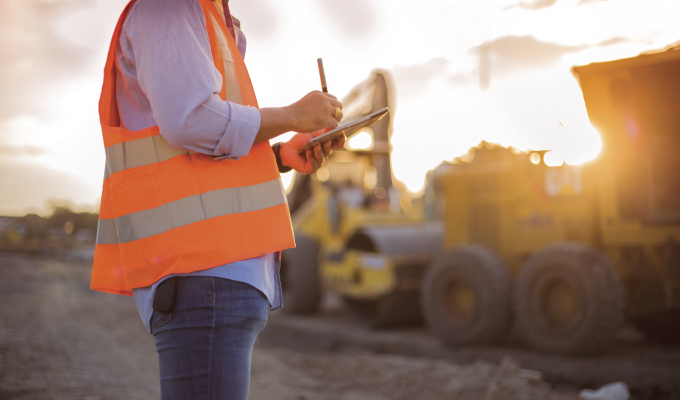By Kevin Vonesh
Safety and health programs need to be effective; there must be an institutional buy-in from the top down
Jobsite safety is top of mind for everyone, and for good reason. It is the strategy and implementation of jobsite safety that directly impacts an organization’s reputation, profitability, and ability to attract/retain talent. Safety policies can also make or break a company—those with ineffective tools could experience severe penalties for legal violations that could potentially result in serious injury. With that said, there are many avenues an organization can take to establish effective workplace safety initiatives. However, many companies often overlook the benefits that advancements in technology and data collection could have on their safety success—especially when it comes to fleet management.
Often, the workplace safety question comes up in conversation when speaking to programs put in place to manage and control compliance-based safety initiatives. The problem that exists is that despite the level of investment many organizations make, they tend to see a plateau in these programs. Accidents still happen, and employees are injured. By putting the correct systems into place, companies can better manage the safety on jobsites, as well as the safety of drivers. Below are some of the latest ways your organization can utilize the power of technology and data to enhance safety strategies.
VIDEO INTELLIGENCE
Research shows that 80 percent of accidents are not the fault of the vocational driver, but how can drivers prove they are not-at-fault? This is where video intelligence (VI) comes into play. VI allows for video footage to be paired with real-time collected information, including vehicle speed, GPS location and more, to give a complete record of an incident to protect both drivers and a company’s bottom line.
VI protects and assures drivers during “not-at-fault” accidents because it can record a continuous feed of vision to exonerate a driver in the event of a collision. Not only does VI help to mitigate and support the claims of accidents, but it also identifies coaching opportunities. Due to the technology VI utilizes, communication opportunities are provided from driver to supervisor to improve overall fleet performance and safety.
NAVIGATION
In the safety conversation, navigation must not be overlooked. Mistakes made during navigation not only hurt productivity but can also place drivers in danger by selecting hazardous routes. Implementing an appropriate in-vehicle navigation systems specific to construction vehicles increases operators’ and organizational safety. For example, ready-mix trucks cannot utilize Google maps, they need to identify streets designed for heavy transport and to avoid other obstacles.
Navigation systems and telematic technology are continually adapting and improving. In fact, geogate technology is now being integrated into some telematic solutions to provide a virtual marker tool that triggers a text or text-to-voice notification to the driver, or back to dispatch via a system message.
GEOGATES
Geogate technology enhances navigation by allowing for potential hazard warnings, sending estimated time of arrival notifications and provides immediate warning of unsafe routes. The manager can set the gate by vehicle direction (e.g., east only), vehicle type, and choose either text alerts, voice alerts or both. Dispatch can add gates is as easy as drawing a line perpendicular across the road on a map.
Dispatch utilize geogates to warn of potential hazards, provide instructions to drivers on where to wait if deliveries are delayed and provide location data to find specific areas that do not exist on GPS. Companies have also found geogate technology to assist in alerting vehicles entering off-limits areas.
REAL-TIME INTELLIGENCE
How does an organization stop a problem before it happens? The answer is, with real-time intelligence to empower the team. Real-time intelligence, or monitoring systems, provides up-to-date information on job status, conditions, and even quality control on materials. With this information, operators and stakeholders can make efficient use of their resources to address potential problems, improve safety decisions, and ensure structural integrity.
Some technology even allows the combination of software with sensors enabling users to create complete and customized monitoring solutions. Real-time intelligence offers a range of on-demand information and activity reports on crucial data such as vehicle location, condition, and mileage. With real-time intelligence, businesses can manage their fleet performance and safety.
CONCLUSION
Unfortunately, there will always be situations where workers are forced to decide between a safe course of action and an unsafe one. Today’s safety and health programs need to be effective, and there must be an institutional buy-in from the top down to create a safe and healthy environment for workers.
About the Author
Kevin Vonesh is the worldwide strategic account sales manager for Trimble’s Construction Logistics division. He has over 18 years of experience in the building materials industry.
Modern Contractor Solutions, May 2019
Did you enjoy this article?
Subscribe to the FREE Digital Edition of Modern Contractor Solutions magazine.



